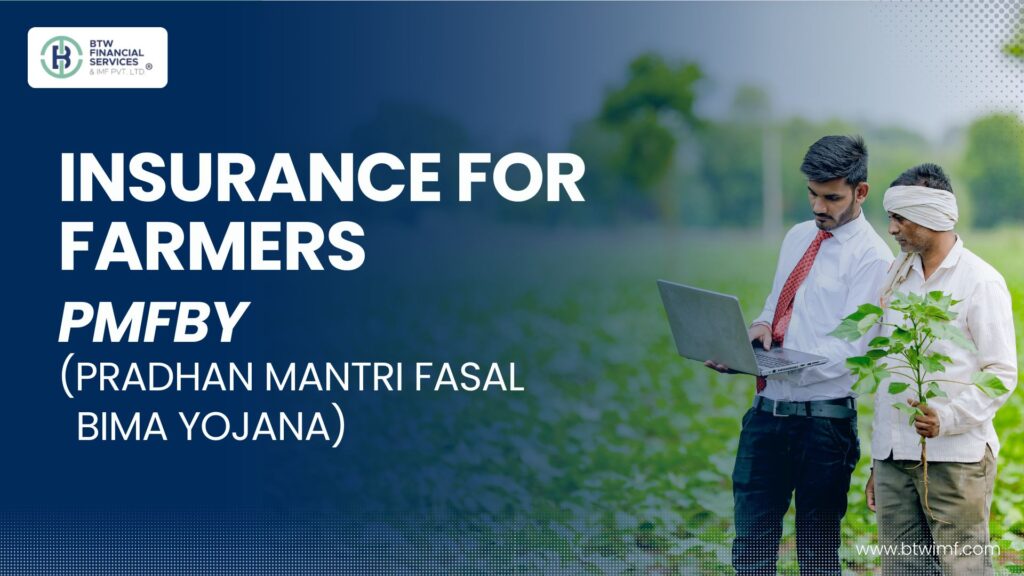Insurance for Farmers: PMFBY (Pradhan Mantri Fasal Bima Yojana)
Summary:
Scheme: Pradhan Mantri Fasal Bima Yojana (PMFBY)
Launched: 2016 by Government of India
Objective: Provide financial support to farmers against crop failures due to natural calamities
Key Highlights:
- Covers various crops against yield losses, pre-harvest, and post-harvest losses
- Farmer’s premium share: 1.5%-5% of sum insured, with remaining subsidized by Central and State Governments
- Voluntary/Compulsory enrollment for loanee farmers
- Simplified claim process with technology integration
Benefits: Financial protection, increased credit availability, promotes agricultural growth, and simplified claims process.
Table of Contents
- Overview
- Key Features of PMFBY
- Coverage and Exclusions
- Premium Rates and Subsidies
- Enrollment Process for Farmers
- Sum Insured and Calculation
- Claim Process and Settlement
- Benefits to Farmers
- Implementation and Performance
- Challenges and Future Directions
- Conclusion
1. Introduction
- Scheme Name: Pradhan Mantri Fasal Bima Yojana (PMFBY)
- Launched: 2016 by the Government of India
- Objective: To provide financial support to farmers in case of crop failure due to unforeseen natural calamities, thereby reducing their financial risks and encouraging them to adopt innovative and modern agricultural practices.
- Replacement for: National Agricultural Insurance Scheme (NAIS) and Modified National Agricultural Insurance Scheme (MNAIS)
2. Key Features of PMFBY
2.1. Coverage
- Crops Covered:
- All food crops (e.g., rice, wheat, maize)
- All oilseeds (e.g., groundnut, soybean, sunflower)
- Annual commercial/horticultural crops (e.g., potato, onion, citrus fruits)
- Risks Covered:
- Yield Losses:
- Drought
- Flood
- Unseasonal rainfall
- Landslide
- Inundation
- Pre-harvest Losses:
- Hailstorm
- Cyclone
- Post-harvest Losses (within 14 days of harvest):
- Cyclone
- Unseasonal rainfall
- Yield Losses:
2.2 . Premium Rates
- Farmer’s Share:
- 2% of the sum insured for Kharif crops
- 1.5% of the sum insured for Rabi crops
- 5% of the sum insured for annual commercial/horticultural crops
- Government Subsidy: The remaining premium amount is shared equally by the Central and State Governments
2.3. Enrollment
- Voluntary Enrollment for farmers who have availed of Seasonal Agricultural Operations (SAO) loans from financial institutions
- Compulsory Enrollment for farmers who have availed of SAO loans and whose crops/areas are notified as covered under the scheme
2.4. Sum Insured
- Based on the Cost of Cultivation, which includes:
- Seed
- Fertilizers
- Irrigation
- Plant protection
- Labour
- Interest on working capital
2.5. Claim Process
- Notification: Farmers notify the insurer or the designated officer within 72 hours of the occurrence of the insured event
- Survey and Assessment: Conducted by the insurer or the State Government
- Claim Settlement: Based on the yield data from the Cut-off Date (COD) and threshold yield
3. Coverage and Exclusions
- Coverage:
- Natural calamities
- Preventable post-harvest losses
- Exclusions:
- War, nuclear risks
- Drought for perennial crops in the first two years
- Losses due to pest and disease, unless triggered by an insured peril
4. Premium Rates and Subsidies
- Premium Calculation:
- Farmer’s share + Government subsidy = Total premium
- Subsidy Structure:
- Central Government: 50% of the premium (after farmer’s share)
- State Government: 50% of the premium (after farmer’s share)
5. Enrollment Process for Farmers
- Identification of Crops and Areas: By the State Government
- Notification to Farmers: Through various media channels
- Application Submission: By farmers to the designated authorities or online
- Verification and Approval: By the authorities
6. Sum Insured and Calculation
- Calculation Basis: Cost of cultivation per hectare
- Components:
- Seed
- Fertilizers
- Irrigation
- Plant protection
- Labour
- Interest on working capital
- Example Calculation:
- Cost of cultivation per hectare: ₹50,000
- Sum insured per hectare: ₹50,000 (for a single crop season)
7. Claim Process and Settlement
- Event Notification: By the farmer within 72 hours
- Survey and Loss Assessment: By the insurer or State Government
- Claim Calculation:
- Based on yield data and threshold yield
- Payout = (Threshold Yield – Actual Yield) / Threshold Yield * Sum Insured
- Claim Settlement: Within a specified timeframe after assessment
8. Benefits to Farmers
- Financial Protection: Against crop failures and resultant income losses
- Increased Credit Availability: With insurance coverage, farmers may find it easier to secure loans
- Promotes Agricultural Growth: By encouraging farmers to invest in modern farming practices and higher value crops
- Simplified Claim Process: Designed to be farmer-friendly, with the use of technology for efficient processing
9. Implementation and Performance
- Implementing Agencies: Agriculture Insurance Company of India (AICI) and other private insurers
- State-wise Implementation: Rolled out across all states in India, with varying levels of adoption
- Performance Metrics:
- Number of farmers insured
- Area under insurance coverage
- Claims settled vs. claims received
- Farmer satisfaction surveys
10. Challenges and Future Directions
- Awareness and Enrollment: Increasing farmer awareness and encouraging enrollment, especially among small and marginal farmers
- Technology Integration: Leveraging technologies like drones, satellite imaging, and mobile apps for efficient claims processing and better assessment
- Customization of Schemes: Tailoring the scheme to address specific regional and crop-related challenges
- Enhancing Government Support: Continuous evaluation and enhancement of the government subsidy structure to ensure the scheme’s sustainability
11. Conclusion
The Pradhan Mantri Fasal Bima Yojana (PMFBY) is a pivotal initiative by the Government of India to safeguard farmers against crop-related financial losses. By understanding the scheme’s features, benefits, and challenges, stakeholders can work towards enhancing its effectiveness, ultimately contributing to the growth and stability of India’s agricultural sector.
It is also important to consider expert advice from insurance providers to make informed decisions and maximize the benefits of the scheme.




